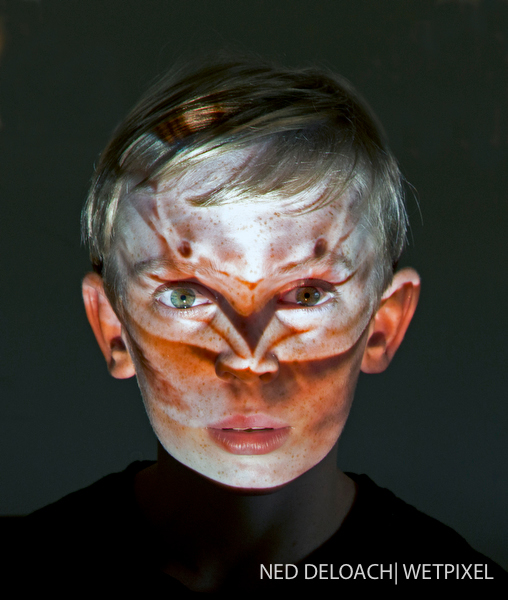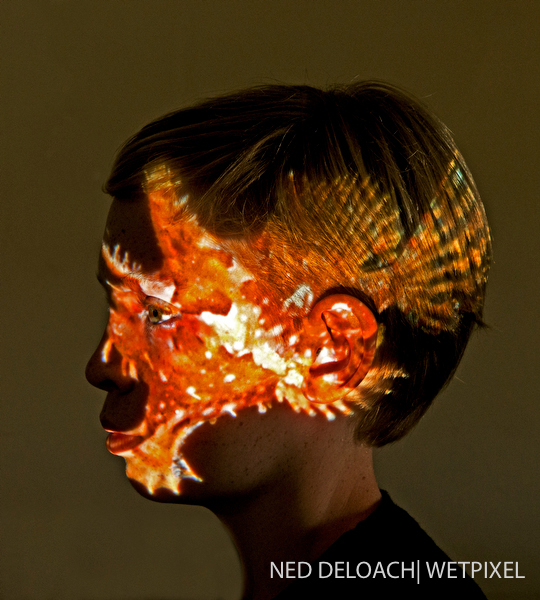The Blennywatcher Diary: October 2013
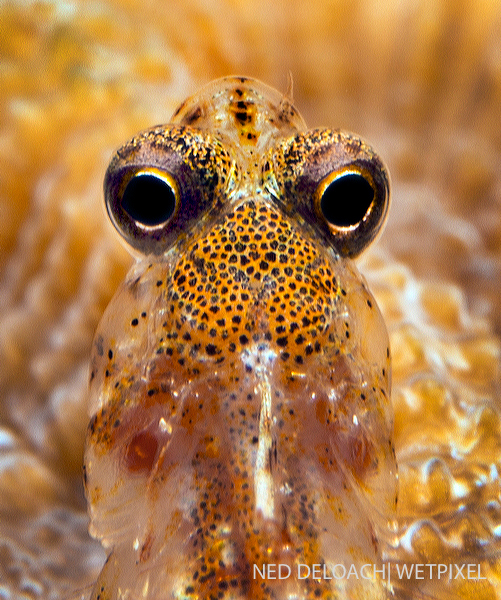
“Hold on, let me look at that a little longer.” Something was not right and it took me a minute to realize the Shorthead Blenny in Ned’s photo was looking backwards at the camera. The pursuit of this image was the reason we went back to the same Bonaire dive site three days in a row; Ned hovered over the mooring block while I patrolled the nearby reef for video subjects. Curious about what started his quest for this shot, I asked him to tell me more about it:
“I was tracking the tiny fish through the viewfinder,” he explained, “trying to shoot nothing more than an ID portrait when the blenny spun around and faced away from me. For an instant before bolting off into a crevice, it rotated both eyes to the back of its head and gazed directly at me. I was too dumbfounded to release the shutter.”
“I wanted that image bad,” he continued, “but the little blenny was a tough customer. Either I couldn’t find it, or more often than not, it perched in awkward locations where I couldn’t position my camera for a shot. Even more frustrating, the few times when I was able to lock focus on the back of the blenny’s head its eyes refused to cooperate, cocking first this way then that, but never facing backwards at the same time.”
It took Ned over four hours underwater to get it and it has to be my favorite blenny portrait yet. On a side note, DNA and expanded study of many of these fishes are resulting in new species descriptions and some common name changes, so while this particular fish may have different common names, it is E. bottomei.
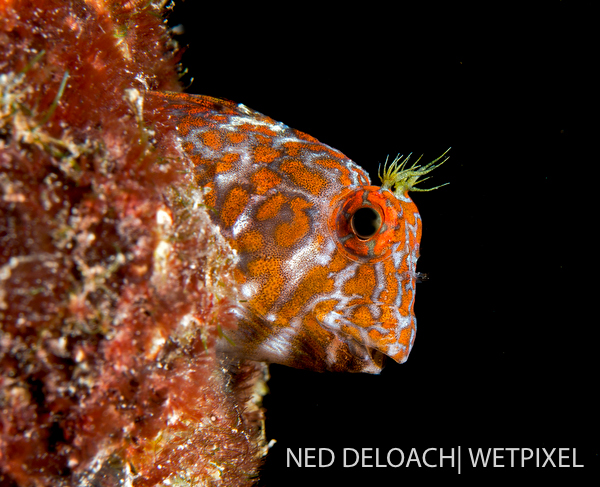

One of our goals during our month in Bonaire was to update our catalog of blenny images. To add to the fun, I launched the Bonaire Blenny Challenge (check out each week’s results at Blennywatcher.com) and invited local and visiting divers to help locate as many blennies as possible. Two fishes that gave us fits were the Orangespotted Blenny, Hypleurochilus springeri and the Tessellated Blenny, Hypsoblennius invemar. Both are quite small, have reddish to orange spots, were most often found in empty barnacle shells or other small holes on dock pilings and always shallow. Lit with a strobe and enlarged on a computer screen, their differences are obvious, but to the naked eye, it was almost impossible to tell them apart, especially when we hovered off a pier piling at a depth of two feet in a surge. When the blennies were in their holes, the closest I could come to telling them apart was by looking for the distinctive but not always evident, black spot behind the eye on the Tessellated Blenny.
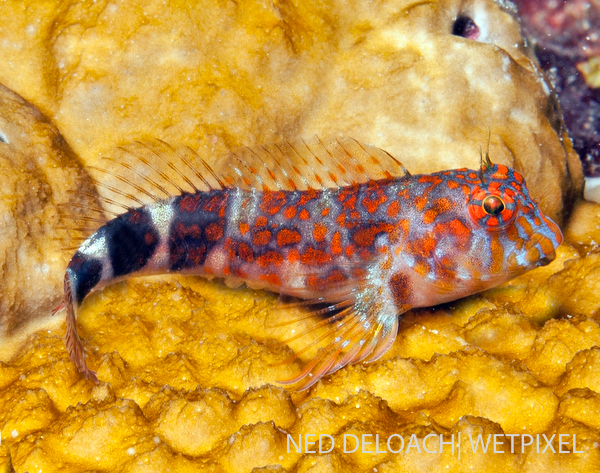
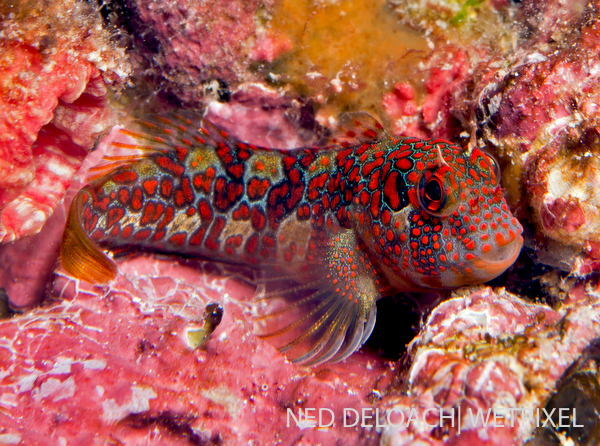
It was easier to tell them apart when they were out of their holes, which happened rarely; however spending hours hanging off pier pilings provided us a few opportunities to catch them darting out and skittering around. The Orangespotted Blenny has several dark bands toward the rear of its body that are absent on the Tessellated Blenny. Again, the differences are obvious in photographs so most of the blenny hunters who accompanied us just shot their photos then sorted them out when we got back to the resort. These are beautiful fish that are often overlooked by photographers so I hope we can inspire others to look for them.
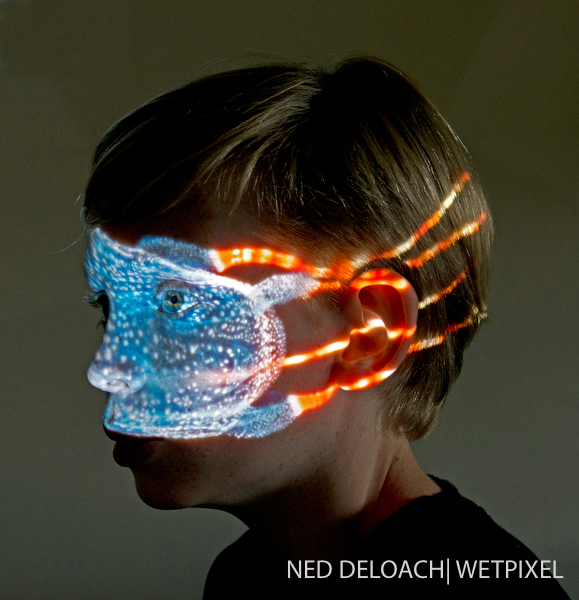
We leave you this month with something different. While Ned was preparing a slide show for an upcoming presentation, our grandson Quinn stepped in front of the projector. The resulting image across his face looked like theatrical face paint. Although work on the slide show ground to a halt, trying different images out on our young thespian made for an amusing afternoon in the DeLoach household.
